Our adventure through the mountainous region of Bulgaria continues!
The next day we left for Shipka. The sky was clear and the air was already beginning to warm up. We set off for Kazanlŭk. Our first stop along the way was at Etar, an Open-Air Ethnographic museum. It is one of the first of its kind in Bulgaria. A wide cobblestone bridge leads you into this little village, designed to show you the way that Bulgarian villages were structured back in the 18th and 19th Century. This village is situated near Gabrovo. The architecture transports you back to the Renaissance period with each little house in the village decorated and designed to take you back in time. There was an old classroom filled with rows of chairs and desks that were used during that period. At the top of the desks was a line of sand, which seemed intriguing and strange to me. Each table was neatly laid out with an ink well and feather. The other houses in the village had a set up with mannequins donned in traditional Bulgarian clothes. As we continued, I noticed that there were small craft shops along the street. There was a shop filled with delicious treats such as handmade Turkish delight. Other craft shops included a handmade silver shop, a wood carving shop, and a pottery shop, with intricately painted items. Other families were milling around this small village museum, yet it was so quiet and peaceful. There was a functioning water mill, which was fascinating to see as this technology no longer exists.
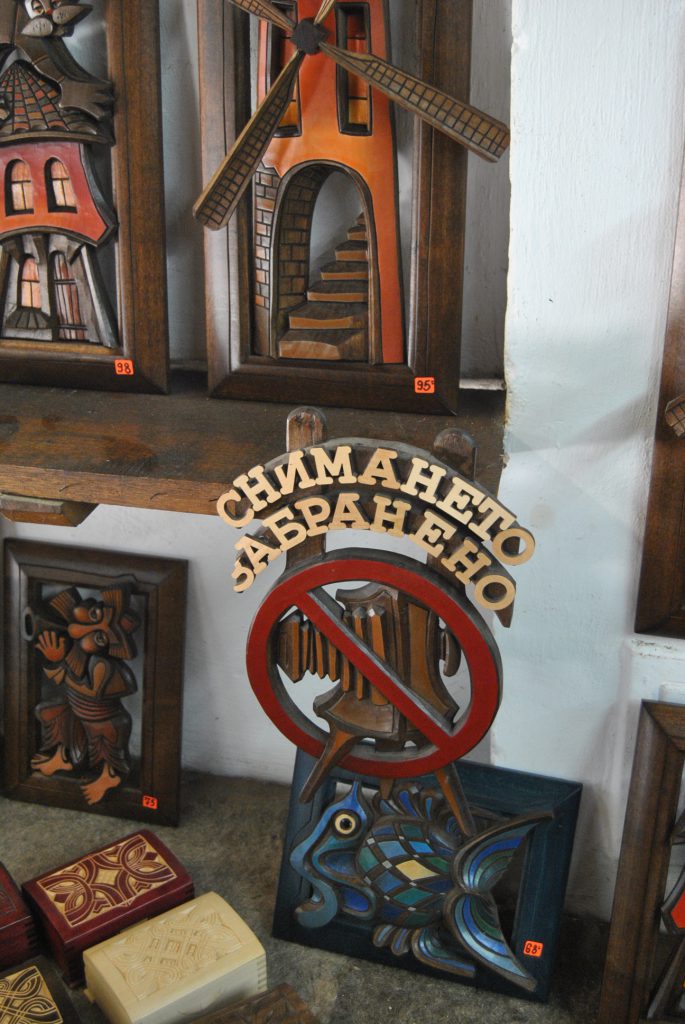
Hand-crafted wooden sign in Etar, an Open-Air Ethnographic museum. Photo by: Megan Pretorius 
A functioning water mill in Etar, an Open-Air Ethnographic museum. Photo by: Megan Pretorius 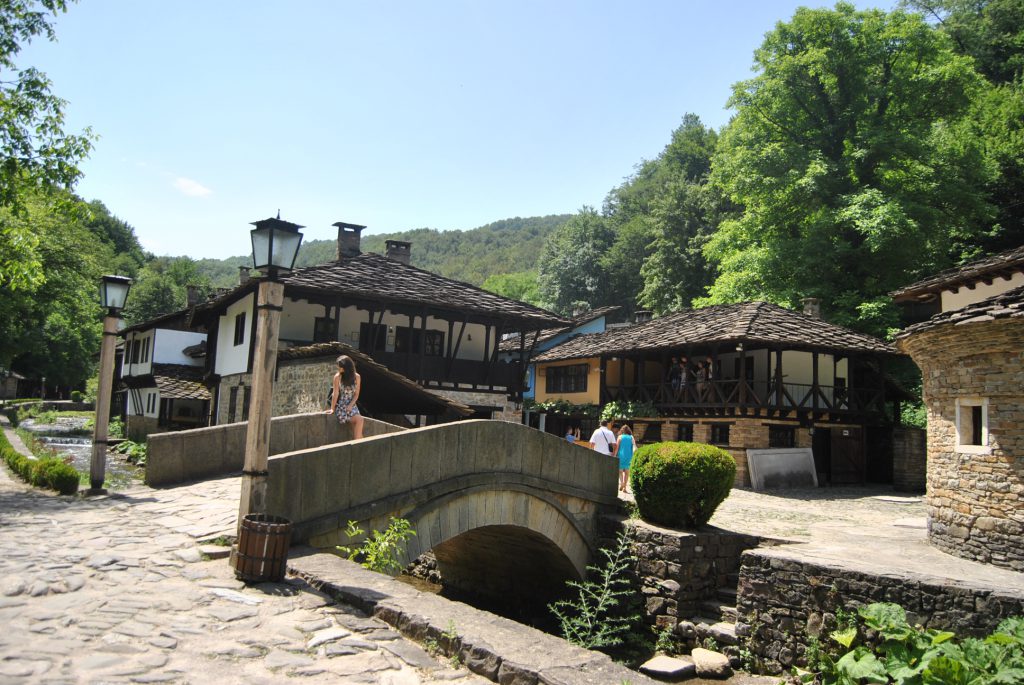
Entrance to Etar, an Open-Air Ethnographic museum. Photo by: Iordan Simeonov 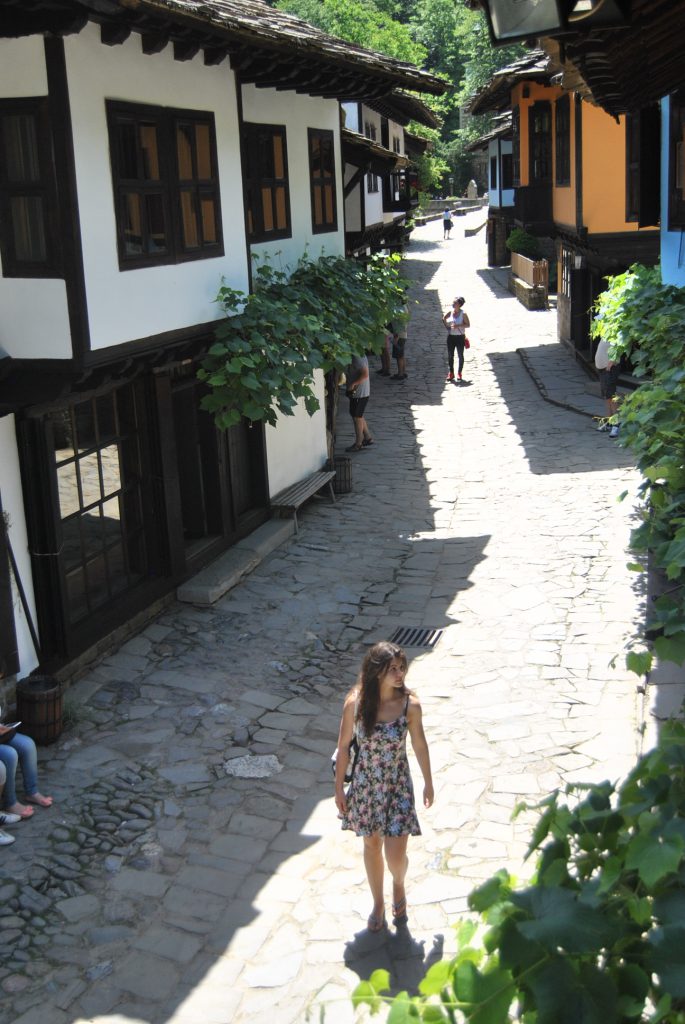
Megan Pretorius walking through Etar, an Open-Air Ethnographic museum. Photo by: Iordan Simeonov 
Pottery shop in Etar, an Open-Air Ethnographic museum. Photo by: Megan Pretorius
After spending a good amount of time exploring through Etar, admiring the unique water mill structures and old architecture, we began our travels again. Our next stop was Shipka. I began to feel overheated while travelling to Shipka. Before we reached Shipka, we stopped at a small rest stop. The plan was to hike up to the top of Mount Stoletov, which is about 1000 steps, to get to the Freedom Monument at the top. The monument was erected in 1934 to honour the 7000 Russian and Bulgarian troops that died in the battle of Shipka Pass. Unfortunately, we did not climb to the monument, because I was not feeling well. I believe I was suffering from heatstroke. I only saw the monument from the restaurant that we stopped to have lunch. I felt horrible because I was excited to see it, but I knew that if I tried to hike up to the monument in the heat with the headache I already had, I probably would have fainted. Which would not have been ideal on a mountain, wouldn’t you say?
Instead, we went to the Russian memorial church in Shipka. It is probably one of the most stunning churches I have seen. The architecture was meticulous, with the sun glinting off the gold onion domes on top of the church. The red, white and gold colour made it so uniquely distinguishable. At the front of the church is a beautiful, neat garden. As you walk around it, it is surrounded by overgrown greenery and forest, which only adds to the beauty of the church. It was designed by Russian architects and was finished in 1902. The church honours the memory of those who sacrificed their lives during the Battle of Shipka Pass during the Russo-Turkish war. The inside of the church was cool and dark but was decorated with beautiful murals. We also went down a narrow staircase leading down to the crypt. The lights on the walls resembled those in the olden times, where there would be torches placed on the wall. Except it was a more modern version where it was a similar look, but instead of it being fire it was electricity. The lights in the grey crypt gave it an ominous feel. The 7000 Bulgarian and Russian soldiers that died in the battle of Shipka were honoured in the crypt below the church. We spent some more time exploring the grounds, wandering through the luscious greenery taking photos of the flowers and the spring that we found next to the church. Add more info.
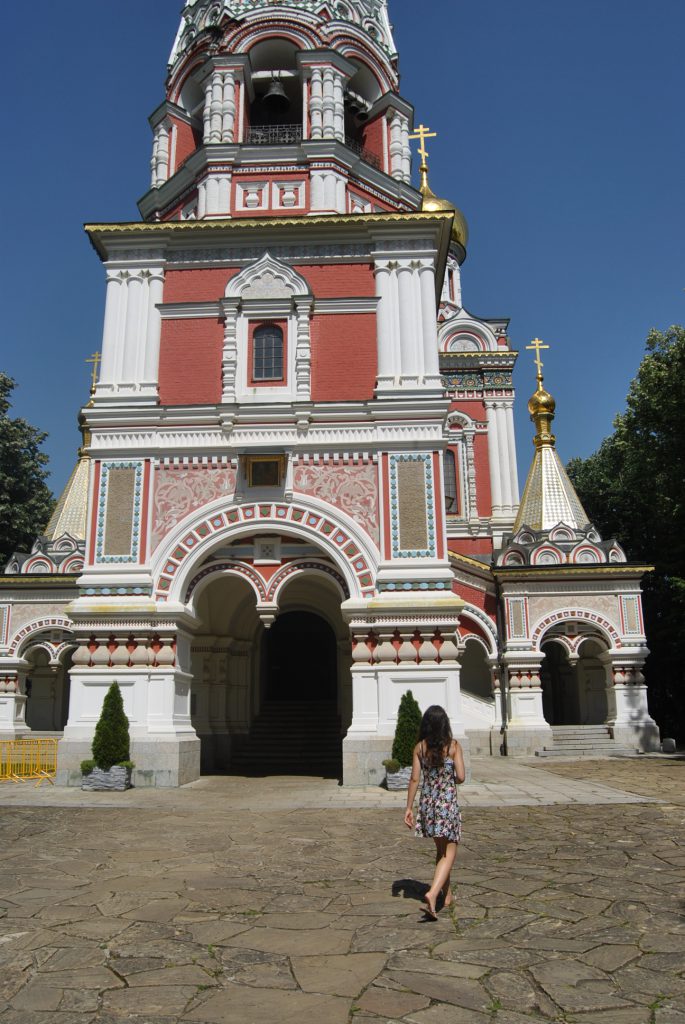
Finally, we made our way to Kazanlŭk, located in the valley of roses. We settled into our hotel, a beautiful little building, put the Aircon on and indulged in some ice-cold drinks. I will admit, that I was still not doing too well with the heat, but I think that my body specifically cannot adjust to temperatures.
The following day, we began exploring Kazanlŭk. We started by walking to the Thracian tomb, the largest and best-preserved ones in Bulgaria. The tomb dated as far back as the end of the 4th Century BC. The Thracians were tribes of Indo-European’s who occupied the South-Eastern peninsula. They were seen as skilful warriors and were known to be wine-making masters. There is a narrow corridor which leads into the round tomb. The walls were covered in fresco paintings which are believed to be the best-preserved from the entire Hellenistic period.
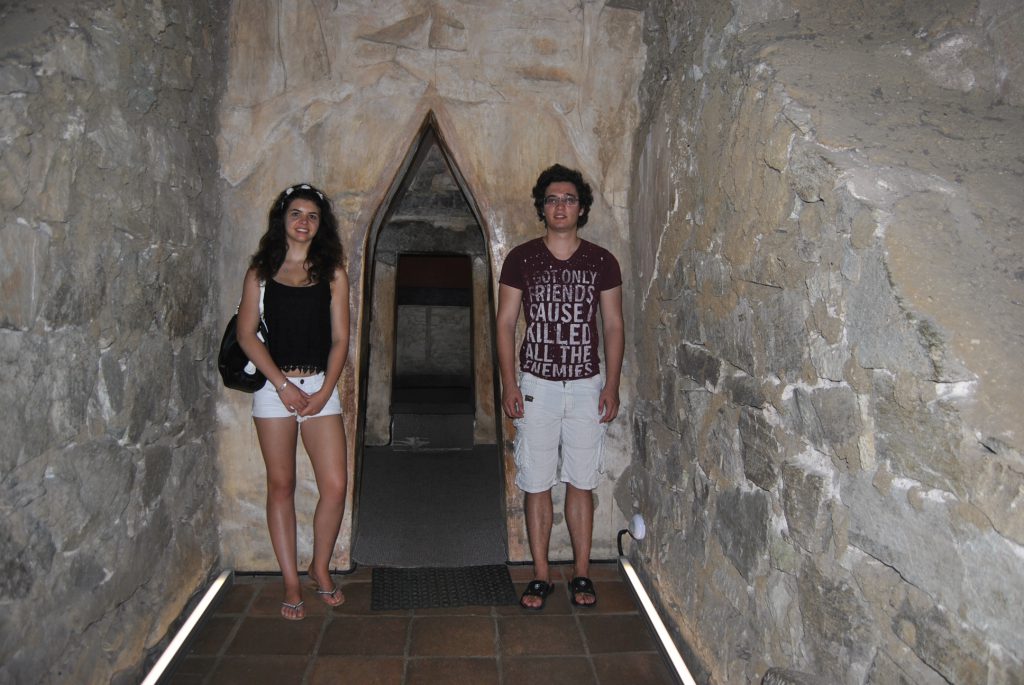
Megan Pretorius and Iordan Simeonov standing at the entrance to the Thracian tomb. Photo by: Lilia Simeonov 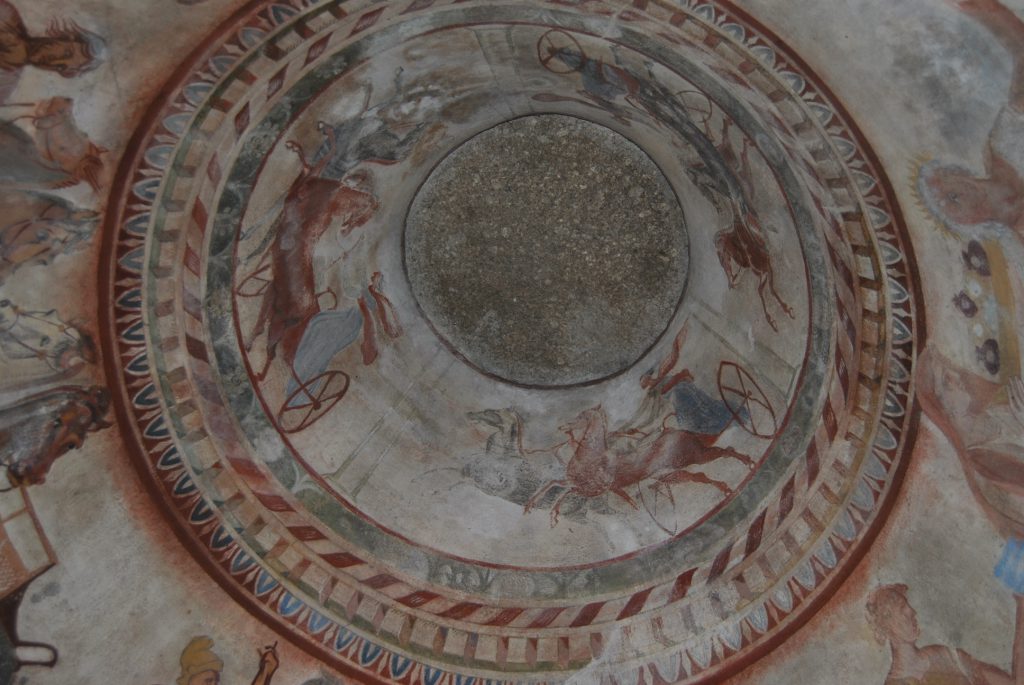
Fresco paintings, the best-preserved from the entire Hellenistic period. Photo by: Megan Pretorius
After the tomb, we made our way to the Museum of Roses. The rose industry is one of the oldest in Bulgaria. Rose oil was Kazanlŭk’s main trade. Inside the museum, you are taken on a tour which tells you when and how rose oil production began and expanded as well as all the tools and equipment that was used during that time. The Rosa Damascena is the famous Bulgarian rose which is used to produce the rose oil. The town has an annual Rose Festival which takes place at the beginning of June (unfortunately we were not there for the festival), where they celebrate their connection to the Damascena.
After the museum and purchasing of some rose perfume, my boyfriend (Dani) and I made our way to the rose park in the centre of town. It was filled with a variety of different coloured roses and paths winding along the rose beds. The late afternoon sun gave the rose park a golden, romantic glow and it almost felt as though we had the place to ourselves. It was the perfect end to the day in the town of roses.
Our travels continue to Glavatarsti!
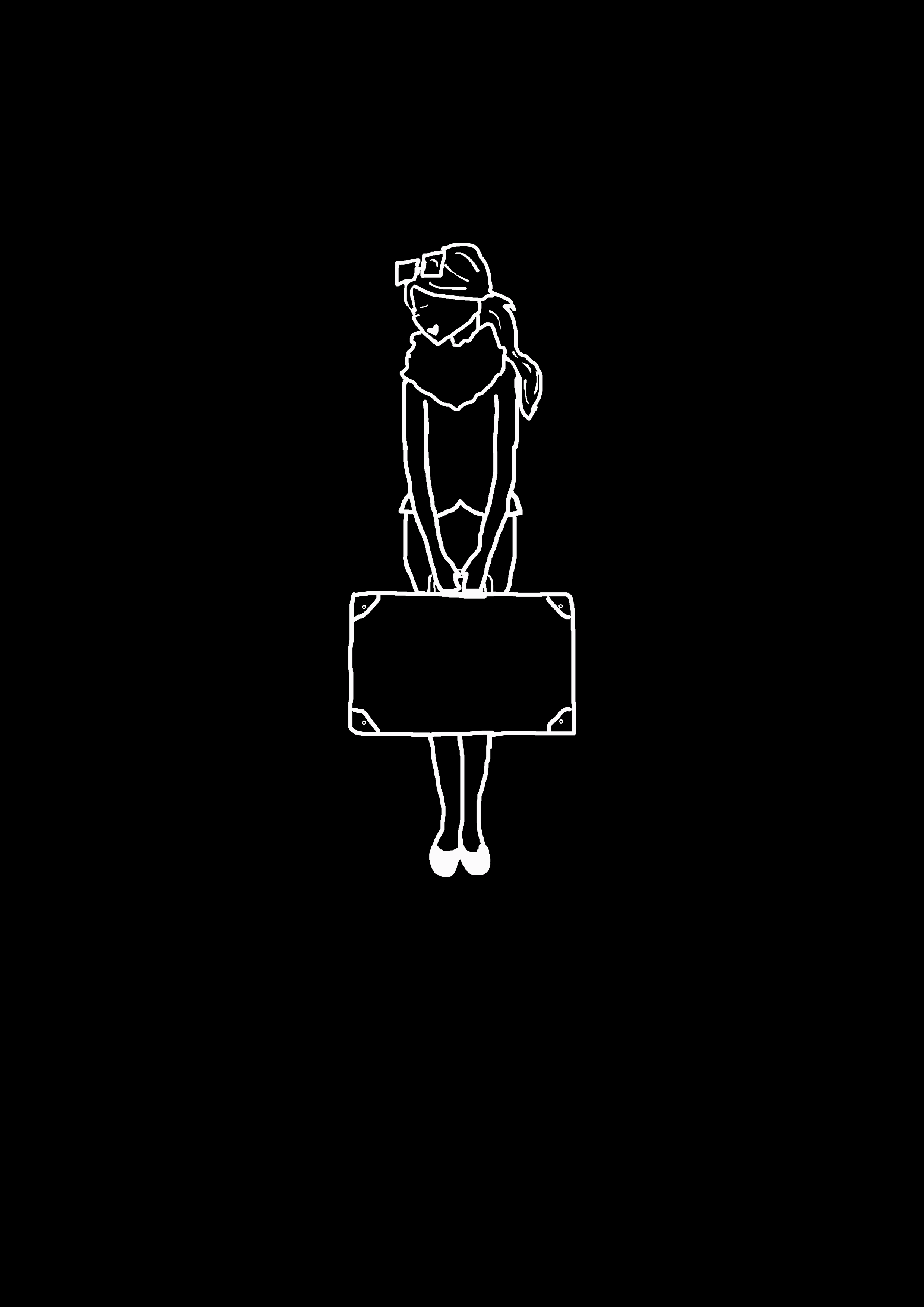

Leave a Reply